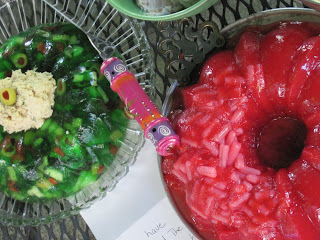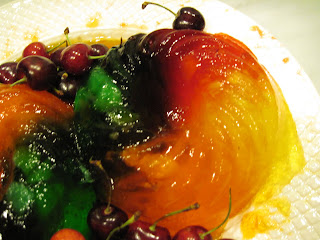 Yesterday, after 3 weeks of rain, it was warm and sunny and it seemed like the entire city was outside mowing 2 feet of grass from their front lawns. Arms full of grading, I sat on our back stoop and let my arms freckle, overjoyed with the sun.
Yesterday, after 3 weeks of rain, it was warm and sunny and it seemed like the entire city was outside mowing 2 feet of grass from their front lawns. Arms full of grading, I sat on our back stoop and let my arms freckle, overjoyed with the sun.
And when my work was finished, I walked to the store and came home with bags of tomatoes and green beans and pints of California blueberries, and baked a lemon blueberry tart and a roasted tomato salad.
It all tasted like summer.



This morning we woke up to a steady rain driving past our windows and clattering onto the street. There are pools of water in my tomato and sweet pea pots. The cats are damp again and settle into our laps to dry.
Time to bake bread.

This morning I thumbed through one of my favorite bread books,
Home Baking, by husband and wife bakers/photographers/travel writers Jeffrey Alford and Naomi Duguid, and settled on the pain au son. A French bran bread, pain au son is kind of a rustic Branola, with a sweet wheat taste, moist crumb, and crunchy, toasty crust.

I didn't have enough wheat bran for two loaves, so I added an equal amount of raw whole oats, as Alford and Duguin note that they always use oat bran in place of wheat. I also replaced some of the white flour with whole wheat. I like the combination--the oats disappeared into the loaf and whatever the science of it is, the results are soft and sweet on the tongue.
This is a nice everyday bread, to be eaten as toast, or alongside soup, or slathered with peanut butter and eaten as a snack. It tastes like the warm bread served in the dining room of Bascam Lodge on Mt. Greylock, where people hiking the Appalachian Trail stop for a night in bed and the best, simple, warm home cooking. My family used to stay there for a week at a time when I was a kid, all of us in bunk beds, hiking different trails each day and inhaling the kitchen's warm bread and gingerbread pancakes. I haven't been to Mt. Greylock in a long time (and now as a Pacific Northwesterner, the mountain wouldn't look so high), but this bread brought me back.
Pain au Son (adapted from
Home Baking)
Makes two very large loaves
4 C lukewarm water
6 T light brown sugar or honey
3 tsp active dry yeast (I used the extra quick rise kind)
1 1/2 C what bran
1 1/2 C raw oats
2 C whole wheat flour
5 C all-purpose white flour, plus some for dusting and adding to the dough if need be
4 tsp salt
Stir together the yeast, sugar and water. Stir in the bran and oats and set aside to soak for 10 minutes.
Sprinkle 1 C of flour over the top and stir in. Sprinkle the salt on the top and stir in. Working 1 C at a time, add the remaining flour to the dough. I use a standing mixer for this, but you could also use a wooden spoon, stirring flour in until it gets too difficult, and then adding the rest as you gently knead the dough.
Once the flour is incorporated (you want a soft, not too sticky dough), knead for 8 minutes, incorporating as little extra flour as possible. I found myself adding a little extra flour to prevent drying, and then adding water to soften the dough, just to add a bit more flour. Just watch the dough as you knead, adding what it needs in tiny increments until you have a large, smooth ball.
Place the dough in a clean, lightly oiled bowl, cover and set aside some place warm for up to 2 hours, until doubled in volume.
Lightly butter two 9X5 loaf pans. Turn the dough out onto a lightly floured surface and give it a few kneads. Let it rest for 5 minutes, loosely covered.
Divide the dough into the two pieces and shape each into a loaf (the easiest way to do this is to flatten the dough into a rough square or rectangle and roll it up from the shorter side, pinching the seam closed as you go). Gently plop each loaf into a pan and cover, letting rise until doubled in volume, about an hour.
Preheat the oven to 375 degrees F. Bake for 50-60 minutes. You'll know the loaves are done with they're a rich brown and you hear a hollow sound when you tap the bottoms. Another trick is to pinch the loaf's corners: they should feel firm. If they still feel a bit soft, pop the loaves (without the pans) back into the oven for 5 minutes.
Let cool on a rack before slicing.






















